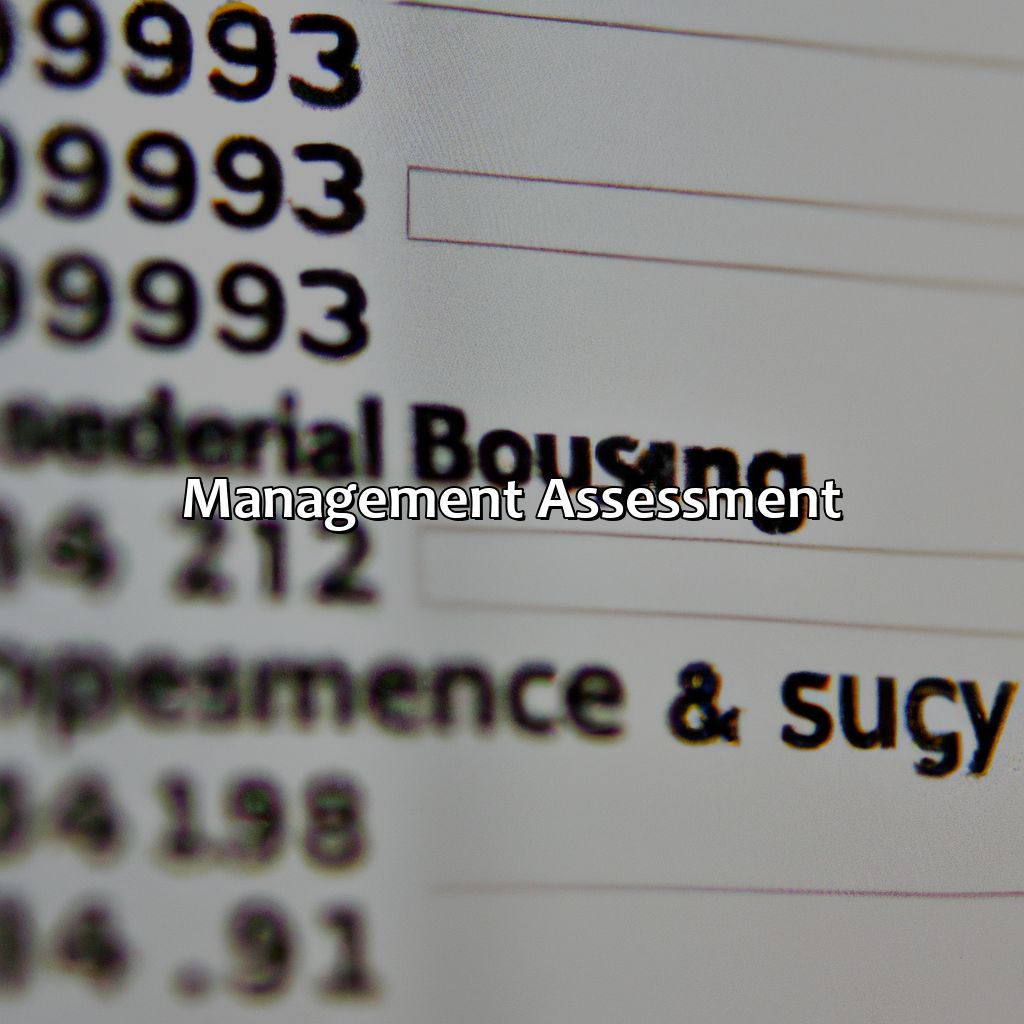How To Evaluate A Company For Investment?
Key Takeaway:
- Financial analysis is crucial when evaluating a company for investment. It involves examining the company’s income statement, balance sheet, and cash flow statement to assess its financial health and stability.
- Market analysis is also important in assessing investment opportunities. This involves looking at industry trends and the competitive landscape to determine whether the company is well-positioned to succeed in its market.
- Management assessment is another crucial factor to consider. This involves evaluating the leadership competence and business strategy of the company’s management team to determine whether they are capable of executing on their vision and driving growth.
- Finally, business valuation is a critical component of investment analysis. This involves using methods such as discounted cash flow analysis, price-to-earnings ratio, and price-to-book ratio to estimate the intrinsic value of the company’s stock and determine whether it is currently undervalued or overvalued in the market.
Do you want to make the most of your investment? Finding the right company to invest in can be a daunting task. Learn how to evaluate a company in order to maximize your return and secure your financial future.
Financial Analysis
To evaluate a company for investment, financial analysis is key. Investigate the Income Statement, Balance Sheet, and Cash Flow Statement. Such documents provide major info on a company’s finances, eg. revenue, expenses, assets, liabilities, and cash flow.

Image credits: retiregenz.com by Harry Woodhock
Income Statement
The income statement provides a comprehensive financial picture of a company’s revenues, expenses, and profits in a given period. The report helps evaluate the company’s profitability, growth potential, liquidity, and solvency. The income statement listed the following data:
| Columns | Data |
|---|---|
| Revenue | $100,000 |
| Cost of goods sold | $35,000 |
| Gross profit | $65,000 |
| Operating expenses | $20,000 |
| Net income | $45,000 |
Looking beyond revenue and operating expenses figures on sales reports can help measure how much money the company made after deducting costs. Net income can signal growth patterns or poorly performing trends.
Investors evaluate balance sheets to determine a company’s financial position and their ability to manage cash flow. By analyzing assets and liabilities in the short (current) and long-term (non-current), investors gain insight as to whether the company is positioned well for continued growth or due diligence actions such as available investing cash.
It’s important to note that for income statements and other benchmarking tools, there should be enough historical data points to establish pattern recognition trends before drawing conclusions about the value potential investments.
Looks like this company has a balanced sheet, but let’s hope their CEO isn’t a fan of tightrope walking.
Did you know that in 1929, companies only prepared balance sheets sporadically for stakeholders such as banks? Now these reports exist regularly, keeping investors informed about what is happening with their investment.
Balance Sheet
A company’s financial statement that offers an overview of its assets, liabilities, and equity is commonly known as the Statement of Financial Position. It is also known as the Balance Sheet and showcases the company’s financial health by presenting a snapshot of its total worth on a specific date.
| Assets | $1,000,000 |
| Liabilities | $500,000 |
| Equity | $500,000 |
It is imperative to note that it displays the difference between assets and liabilities indicating if shareholders’ equity represents positive or negative results. Balance Sheet analysis helps evaluate a firm’s liquidity levels, solvency, and leverage ratios, all of which are fundamental factors for making investment decisions.
It is recommended that investors review multiple years of historical data to assess how balances have changed over time and look out for potential red flags such as significant variations in the accounts payable or accounts receivable sections.
For instance, Amazon has been recording impressive balance sheets with continuous growth in their total assets along with profitability gains year after year. Money talks, but a cash flow statement speaks volumes about a company’s financial health.
Cash Flow Statement
Below is a table showing an example of a Cash Flow Statement for Company XYZ:
| 2021 | 2020 | |
|---|---|---|
| Operating Activities: | ||
| Net Income | $300,000 | $250,000 |
| Depreciation Expense | $50,000 | $60,000 |
| Changes in Accounts Receivable | ($20,000) | $25,000 |
| Investing Activities: | ||
| Purchases of Property and Equipment | ($100,000) | ($70,000) |
| Sales/Purchases of Investments | $50,000 | ($20,000) |
| Financing Activities: | ||
| Issuance of Common Stock | $150,000 | $50,000 |
| Payment of Dividends | $(30,000 ) | (20,000) |
It’s essential to inspect the Cash Flow Statement when assessing a potential investment in a company. Analyzing cash flow can help investors evaluate the company’s liquidity in generating or using money to support its operations or expansion projects.
The operating activities section can show if the company is generating enough cash from daily operations to sustain itself. The investing activities will give you an insight into how much money the enterprise is spending on assets like equipment to support growth opportunities while financing activities illustrate how the company earnings financing through debt or equity issuance.
With so much at stake when investing your capital in an enterprise having little understanding can be risky. Seeing from this table, without the evaluation of the Cash Flow Statement, investors could miss out on critical details about a company’s financial health. It is a tool that can’t be overlooked during investment analysis.
Analyzing the market is like trying to predict the weather – it’s mostly guesswork, but a little bit of research helps.
Market Analysis
When analyzing a company for investment, market analysis is key. Explore industry trends and the market’s growth and future. Also, do competitor analysis. Uncover the company’s strengths, weaknesses and opportunities. Get the best of the market.

Image credits: retiregenz.com by Adam Arnold
Industry Trends
Assessing Market Trends for Potential Investments
Market trends play a critical role in evaluating companies for potential investments. Research and analyze industry-specific publications, media articles, trade shows, and reports to understand the current market landscape. Identify emerging segments and assess the rate of growth, competitive dynamics, regulatory environment, and consumer behavior.
It is essential to keep in mind that industry trends are constantly evolving. Therefore, it’s crucial to perform regular assessments to track changes and adjust investment strategies accordingly. Additionally, understanding the current market can provide valuable insights into potential risks and opportunities for an investment.
Finally, seek out expert advice when analyzing industry trends to gain deeper insights into complex global factors that may impact your investment decisions. By following these practices, investors can make informed decisions with reasonable expectations of long-term performance.
“Analyzing your competitors is like playing a game of chess, except the goal is to bankrupt your opponent instead of checkmate them.”
Competitor Analysis
Assessing Rivals
A crucial aspect of scrutinizing a business for investment is evaluating competitors. Here are 5 key points to consider while analyzing rival firms-
- Market Share: Determine the competitor’s market share, in order to understand their position in the industry.
- Competitive Advantage: Assess the factors which set them apart from other businesses of similar nature.
- Strengths and Weaknesses: Identify what makes the competitor strong or weak in their operational activities.
- Products and Services: Get an insight into their product line, quality provided and pricing policies.
- Growth prospects: Try to determine if they are seeking new opportunities or growth paths like exploring new markets or investments.
It is also important to examine the lifecycle stage of competitors, company culture and analyze if there are any collaborative opportunities or threats.
Contextualized by this topic, the right competitor assessment resulted in history creating better mergers and acquisitions. In 2016, Microsoft acquired LinkedIn for a staggering £18bn after reviewing its major rivalries in social networks and analytics platforms.
Remember, when evaluating management, look for someone who can juggle financials like a circus performer and keep the company from going bankrupt.
Management Assessment
To assess a company for investing in, you need to analyze the leadership abilities and business plan. Knowing both of these elements will help you work out if the company is being directed properly and has a bright future.

Image credits: retiregenz.com by Adam Duncun
Leadership Competence
When evaluating a company for investment, one must analyze the competency of its leadership. This entails examining the skills, experiences, and qualities of those at the top to ensure they possess the necessary aptitude for successfully guiding the organization. Effective leaders inspire, motivate, and make strategic decisions that advance their companies’ missions. Because management failure can cause significant harm to a business, evaluating leadership competence is essential.
It’s important to note that judging a leader solely on subjective traits such as charisma and likability may lead to inaccurate assessments. Evaluators should also consider objective factors such as professional achievements, industry expertise, and decision-making capabilities. By holistically reviewing these qualities alongside softer ones like communication skills and emotional intelligence, one can gain a clear understanding of how a leader operates.
Ultimately, great leaders drive success through creating clear objectives, implementing effective strategies, guiding high-performing teams, and demonstrating strong ethical practices. Overall an evaluation of these competencies can distinguish whether or not investing in such leaders will be fruitful for stakeholders.
In history we have seen competent and proven examples of effective leadership from pioneers such as Henry Ford who was instrumental in revolutionizing manufacturing leadership by creating assembly lines; Steve Jobs whose forward-thinking mindset with Apple transformed many industries; Jack Ma who built Alibaba into one of China’s leading e-commerce companies. Competent Leadership is essential to any investment opportunity looking forward to long-term success.
Remember, a good business strategy is like a game of chess – you have to be strategic, adaptable, and willing to sacrifice a few pawns along the way.
Business Strategy
A company’s approach to achieving its objectives through planning and execution of initiatives is known as Operational Strategy. It involves analyzing the market, deciding on a value proposition, and leveraging organizational resources to realize long-term goals. A business strategy can have components like organizational structure, innovation, branding, pricing or risk management that positively impact the investment decision.
Investors often evaluate the Firm’s operational Efficiency by assessing how effective strategic decisions led to improved financial performance over time. They may look at unique selling propositions (USPs), marketing channels employed, return on capital employed and innovation investments.
Therefore, a thorough examination of historical financial records and information about past strategic decisions helps evaluate firms’ growth potential and credibility for potential investors.
It should be noted that there are different aspects good investment strategy- it’s importance varies depending on the Business field.
Valuing a business is like trying to put a price on a first date – you don’t want to overpay, but you don’t want to miss out on a good thing.
Business Valuation
Evaluating a company for investment requires knowledge of Business Valuation. This means analyzing Discounted Cash Flow Analysis, Price-to-Earnings Ratio, and Price-to-Book Ratio. These metrics help you determine the company’s financial health and potential profitability.

Image credits: retiregenz.com by James Arnold
Discounted Cash Flow Analysis
Valuing companies can be done through a technique called present value of cash flow. This approach is known as discounted cash flow analysis, where future cash flow projections are discounted to present-day values.
By using this method, investors can accurately assess a company’s worth and evaluate its potential for investment. The discount rate used in this analysis may differ based on the industry sector, risk level, the economic environment in which the business operates, and other factors.
Moreover, discounted cash flow analysis can provide additional insights such as how much return on investment one can expect and compare different investment opportunities.
To improve the accuracy of your valuation, research industry trends and benchmarks. As an investor, you should also consider non-financial factors that could impact the company’s performance. Additionally, conducting sensitivity analyses by tweaking variables will help determine possible outcome variations to make informed choices about investments.
If you’re looking for a quick way to determine a company’s worth, just remember: P/E ratio – it’s like looking at a price tag for stocks.
Price-to-Earnings Ratio
To evaluate a company’s investment potential, investors often use the Price-to-Earnings Ratio (P/E Ratio). This ratio is calculated by dividing the current market price of a share by its earnings per share. The P/E Ratio helps determine if a company’s stock is overvalued or undervalued.
In Table 1 below, we illustrate an example of how to calculate the P/E Ratio for Company XYZ. The current market price per share is $50, and the earnings per share are $5. Therefore, the P/E Ratio for Company XYZ is 10.
| Company Name | Market Price Per Share ($) | Earnings Per Share ($) | Price-to-Earnings (P/E) Ratio |
|---|---|---|---|
| Company XYZ | 50 | 5 | 10 |
Investors should note that low or high P/E Ratios do not always indicate whether a company is worth investing in. Moreover, comparing P/E Ratios across different sectors can be misleading since some industries tend to have higher ratios than others. In such instances, investors should analyze multiple factors to make informed investment decisions.
Pro Tip: Investors should look beyond just one financial metric when evaluating an investment opportunity and seek expert advice before making any significant decisions.
Valuing a company is like monitoring your bank account – you need to keep an eye on that Price-to-Book ratio if you want to make smart investment decisions.
Price-to-Book Ratio
Innovatively Interpret ‘Price-to-Book Ratio’
The Price-to-Book Ratio (P/B) is a financial metric used to determine the correlation between a company’s market value and its book value. It helps investors understand how much the market is willing to pay for each unit of the company’s net assets, which makes it an essential tool for evaluating a potential investment.
By dividing a company’s current stock price by its book value per share, the P/B ratio is derived. A P/B ratio less than one suggests that a stock could be undervalued while a ratio above one indicates that it might be overvalued. However, investors should consider factors such as business industry, risk exposure, and future growth potential when assessing P/B ratios.
Another important aspect of P/B is identifying the differences in book value calculations by companies across various industries. For example, traditional retail companies’ physical assets may exceed technology startups’ intellectual property rights assets.
According to MarketWatch data analysis, as of September 2021 Booking Holdings Inc had a P/B ratio of 9.4 times higher than its competitors within the same industry: Expedia Group Inc with 2.7 times and Tripadvisor Inc with 3.1 times higher P/B ratios, respectively.
5 Facts About How To Evaluate A Company For Investment:
- ✅ Understanding the company’s financial statements is essential. (Source: Investopedia)
- ✅ Investigating the company’s management team and their track record can provide valuable insight. (Source: Forbes)
- ✅ Analyzing the company’s industry and market position can help determine potential growth and competition. (Source: The Balance)
- ✅ Assessing the company’s products or services and their competitive advantage is crucial. (Source: Entrepreneur)
- ✅ Reviewing the company’s legal and regulatory compliance is important to avoid any potential legal issues. (Source: Harvard Business Review)
FAQs about How To Evaluate A Company For Investment?
What are some key factors to consider when evaluating a company for investment?
When evaluating a company for investment, there are several key factors to consider. These include the company’s financial performance, market position, management team, competitive landscape, industry trends, and growth potential.
How can I assess a company’s financial performance?
One way to assess a company’s financial performance is to review its financial statements, including its balance sheet, income statement, and cash flow statement. You can also look at key financial ratios, such as the price-to-earnings ratio, return on equity, and debt-to-equity ratio.
What should I consider when evaluating a company’s management team?
When evaluating a company’s management team, it is important to consider their experience and track record, as well as their vision for the company’s future. You may also want to consider their communication style, corporate culture, and ability to attract and retain top talent.
How do I evaluate a company’s competitive landscape?
When evaluating a company’s competitive landscape, it is important to consider the competitive dynamics of the industry, the company’s market share and position, and the strength of its competitors. You may also want to research any potential threats or disruptions that could impact the industry or the company in the future.
What is the significance of industry trends when evaluating a company for investment?
Industry trends can provide valuable insights into the growth potential and future prospects of a company. By researching and analyzing industry trends, you can get a better sense of the size of the market, the impact of new technologies or regulatory changes, and the potential for future growth.
How important is a company’s growth potential when evaluating it for investment?
Growth potential is a key consideration when evaluating a company for investment. A company with strong growth potential may have a higher valuation and greater potential for long-term returns. However, it is important to assess the sustainability of the company’s growth and the potential risks of investing in a high-growth company.


